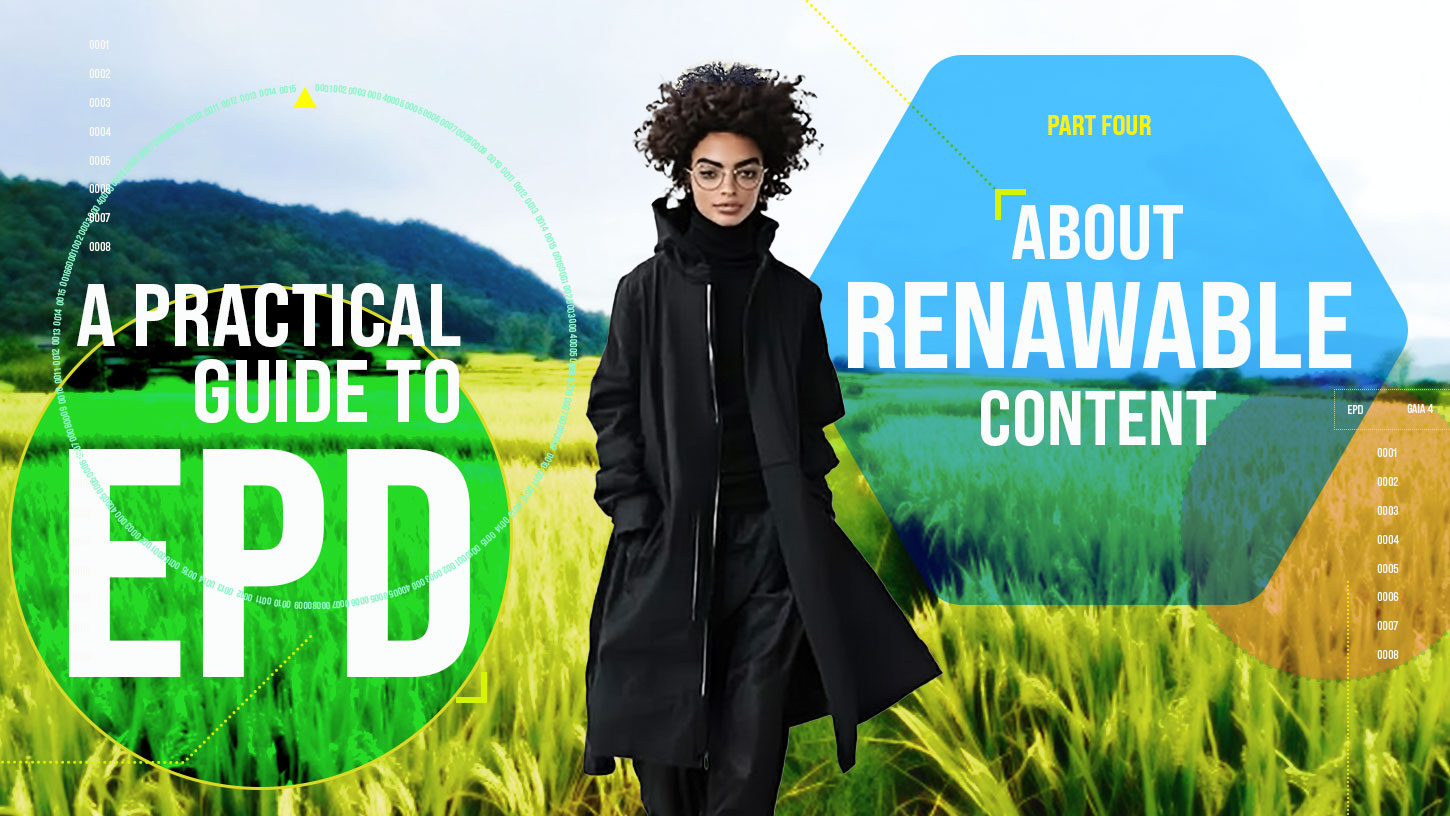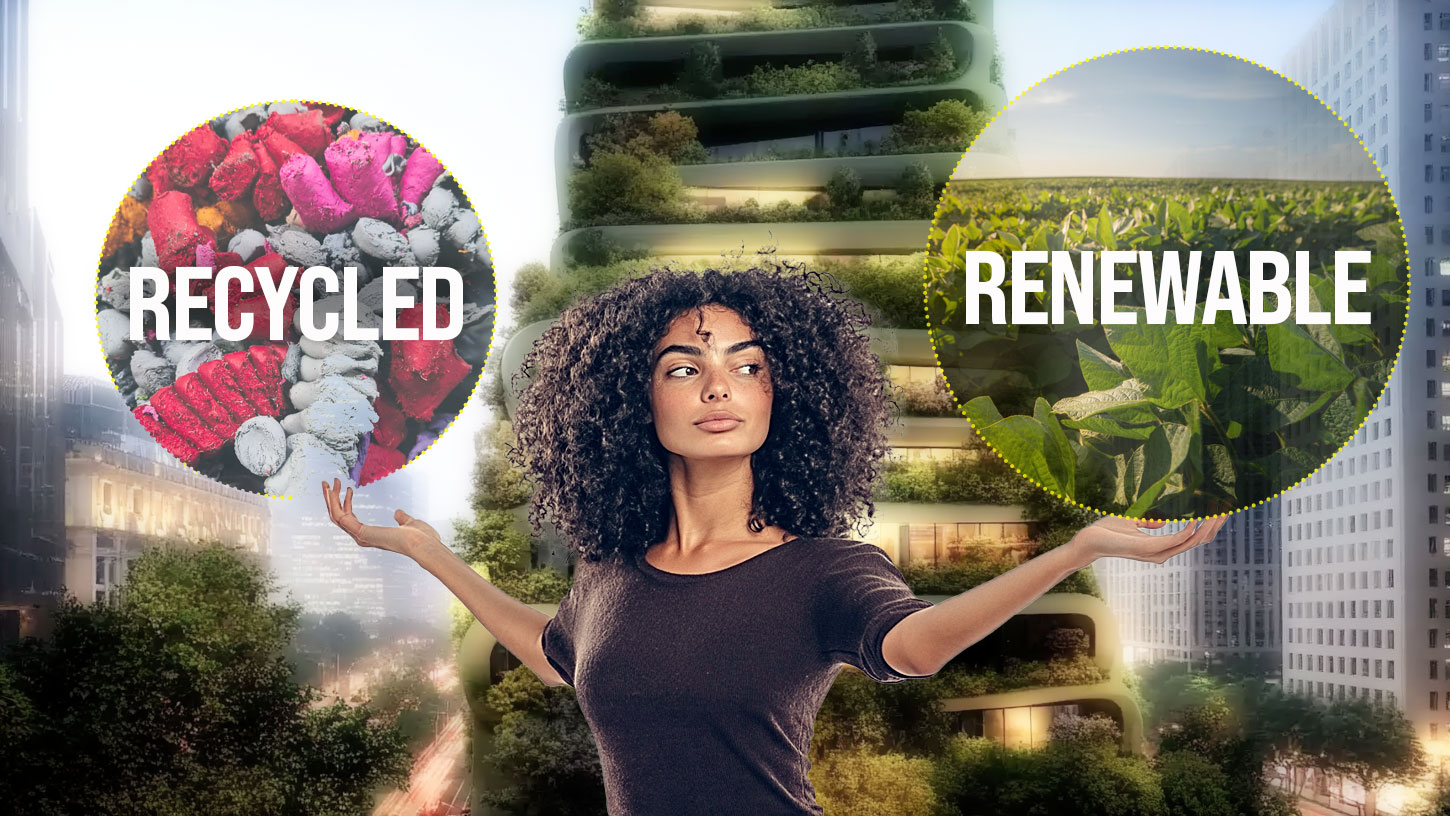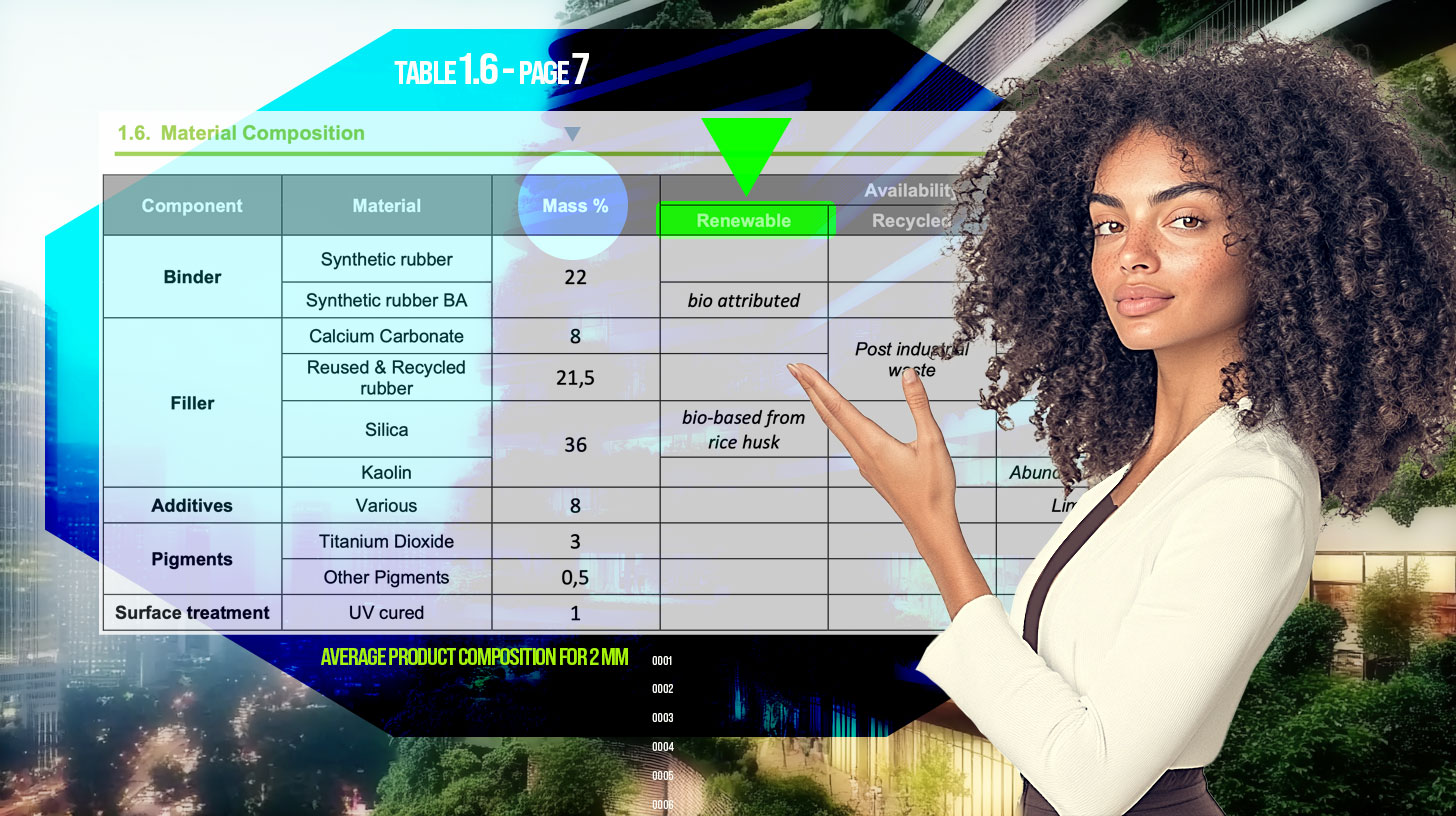
A PRACTICAL GUIDE TO EPD
PART FOUR: ABOUT RENEWABLE CONTENT
In the previous article, we discussed recycled content; in this one, we will address the topic of renewable content and how to identify it in an EPD.
These two concepts are often presented together, which can create some confusion. So let’s start by clarifying:

Recycled refers to the use of:
- waste material that is turned into a by-product (post-industrial recycled);
- material recovered at the end of its lifecycle (post-consumer recycled), reused to create new products and start a “new life.”
The significant engineering effort of recent years has focused precisely on finding new solutions to divert waste from landfills and reuse it in production cycles, reducing the use of virgin raw materials.
Renewable refers to:
the origin of a material, which comes from natural resources capable of regenerating quickly, such as plants or animals. Renewable materials are sustainable in the long term, unlike fossil-based ones.
The renewable portion of the raw materials used in products is just as important as the recycled part. Increasing the use of renewable raw materials to replace fossil-based ones is one of our goals on the path toward greater sustainability.
Having clarified this fundamental premise, we can focus on renewable raw materials. Let’s begin with the differences between Bio-based and Bio-attributed raw materials.

Raw materials identified as Bio-Based are those that come directly from biomass, which is often a by-product of the agri-food industry.
These raw materials often contribute to a reduction (below zero) in CO2 emissions calculations since, during their plant-based lifecycle, they absorb carbon dioxide from the atmosphere.
A practical example in our products is the replacement of mined silica with silica derived from rice husk.
Rice husk is, in fact, a by-product of rice cultivation, usually discarded as waste. The reuse of this renewable material allows us to achieve a substantial reduction in the resource-intensive extraction processes typical additional silica.
Raw materials identified as Bio-Attributed, on the other hand, are largely (but not exclusively) produced from substances of biological origin.
The term “bio-attributed” indicates that the use of bio-based raw materials has been allocated using the mass balance methodology, which measures the extent to which fossil-based raw materials have been replaced by renewable raw materials over the course of a year.
In our GAIA product range, we use bio-attributed rubber, produced largely from plant- or seed-based oils. By using it, we have reduced our dependence on non-renewable sources, minimizing environmental impact.
In essence, Bio-based materials are directly composed of biomass, while Bio-attributed materials use an attribution system to certify the use of biological resources in the production process.

Where can I find renewable content in the EPD?
As with recycled content, it can be found in the section dedicated to material composition (Table 1.6).
Why is it so important?
Because both Bio-based and Bio-attributed materials significantly reduce environmental impact. Unlike fossil-based raw materials, which take millions of years to form and are permanently extracted from the environment, renewable materials—true to their name—regenerate naturally and absorb carbon dioxide (CO2) from the atmosphere during their lifecycle.
In the case of rice husk, we are even talking about a rapidly renewable raw material (in equatorial regions, it is possible to harvest rice two or three times a year), which is, of course, an additional advantage. Nature quickly regenerates what we use today!
Are there other important details in an EPD?
Absolutely. In this series of articles, we have focused only on some key aspects of reading an EPD; however, the document contains many other useful data points: energy consumption, water use, and disposal methods, all of which help to more fully assess a product’s sustainability.
In upcoming articles, we will explore further important information that the EPD can provide.
CONTACT US!
"*" indicates required fields